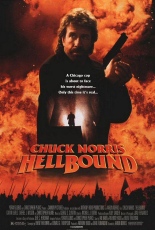
 Hellbound opens with a Star Wars-esque crawl that reads in part, “When time began the soul of darkness was thrust into the depth. Its evil split from the light of humanity to be called forth in times of weakness and despair. Satan’s emissary, Prosatanos, would prowl the Earth searing all before him with fire and blood.”
Hellbound opens with a Star Wars-esque crawl that reads in part, “When time began the soul of darkness was thrust into the depth. Its evil split from the light of humanity to be called forth in times of weakness and despair. Satan’s emissary, Prosatanos, would prowl the Earth searing all before him with fire and blood.”
Blah blah blah. That’s a dull, wordy way of just spitting out the movie’s lone selling point: Chuck Norris battles the spawn of Satan. Hell, yes.
The evil dude in question is Prosatanos (Christopher Neame, Licence to Kill), who’s a lot balder than I would’ve pictured the devil’s envoy to be. Sealed in a tomb in a Crusades prologue, he vows revenge and gets it after pesky minorities unknowingly let him loose in 1951, and he shows up in modern-day Chicago to ball a hooker (Zoe Trilling, Night of the Demons 2). Nearby are two of Chi-Town’s finest: Sgt. Shatter (Norris, natch) and his cornrowed African-American partner, Jackson (Calvin Levels, Adventures in Babysitting). The duo battles drug suppliers and pimps with their fists, feet and tuff-talkin’: “Watch this, you little piece of shit!”
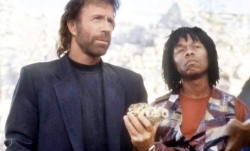 Prosatanos rips the heart out of a rabbi and high-tails it to Israel, where Shatter and Jackson are summoned for questioning. While there, they attempt to track down the supernatural slayer — or at least Shatter does; Jackson just wants to eat, but the white man keeps foiling those plans. Food is all Jackson talks about, but at least it makes for the film’s best lines, from “Why don’t you just cut my nuts off with a dull-edged butter knife?” to “Either this guy’s nuttier than a Snickers or there is some real heavy shit goin’ down.” (Note I didn’t say they were any good — just the best of what there is.)
Prosatanos rips the heart out of a rabbi and high-tails it to Israel, where Shatter and Jackson are summoned for questioning. While there, they attempt to track down the supernatural slayer — or at least Shatter does; Jackson just wants to eat, but the white man keeps foiling those plans. Food is all Jackson talks about, but at least it makes for the film’s best lines, from “Why don’t you just cut my nuts off with a dull-edged butter knife?” to “Either this guy’s nuttier than a Snickers or there is some real heavy shit goin’ down.” (Note I didn’t say they were any good — just the best of what there is.)
A similar sentiment could apply to Hellbound, which finds Norris squarely in both the phases of mullet-donning and formula-tweaking. With his bankability days behind him, the bearded big cheese experimented beyond mere action, but action with kids (Sidekicks), canines (Top Dog) and demons (this). It is as silly as you would expect, which is precisely what makes it stand out among his filmography. Where else will one find such a matchup of the prince of darkness vs. the prince of Cannon Films? (Just to clarify amid his extreme right-wing views of today, Norris was the latter at the time.) —Rod Lott


 From 1975, the original film adaptation of
From 1975, the original film adaptation of 
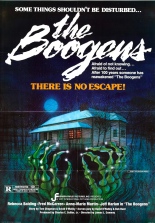
 Three decades passed between the 10-year-old me being intrigued by the TV ads for
Three decades passed between the 10-year-old me being intrigued by the TV ads for 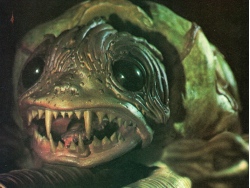
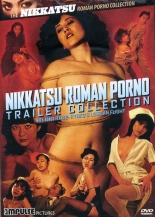
 From 1971 to 1988, the Japanese studio Nikkatsu famously cranked out more than a thousand sexploitation films so a horny populace could, y’know, crank ’em out. The riotous
From 1971 to 1988, the Japanese studio Nikkatsu famously cranked out more than a thousand sexploitation films so a horny populace could, y’know, crank ’em out. The riotous  Ah, yes, the taglines. Consider:
Ah, yes, the taglines. Consider: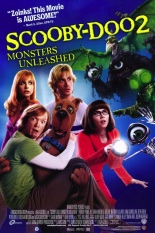
 Oh, you can add Seth Green as a museum curator, Alicia Silverstone as a nosy reporter and Peter Boyle as a senile old man, but you’re not fooling me: This is the same movie. Granted, there are two big fart gags rather than just one this time around, but still, it’s the same crap all over again: zero story, zero laughs and all special effects. Lord, why did I have kids?
Oh, you can add Seth Green as a museum curator, Alicia Silverstone as a nosy reporter and Peter Boyle as a senile old man, but you’re not fooling me: This is the same movie. Granted, there are two big fart gags rather than just one this time around, but still, it’s the same crap all over again: zero story, zero laughs and all special effects. Lord, why did I have kids?